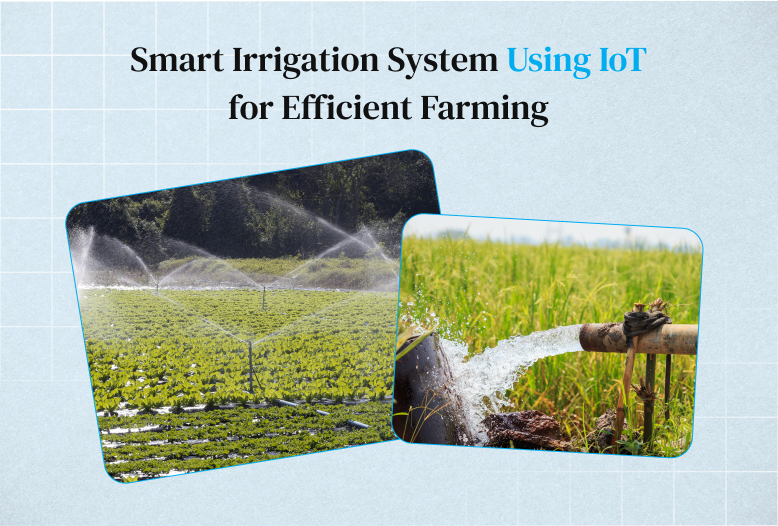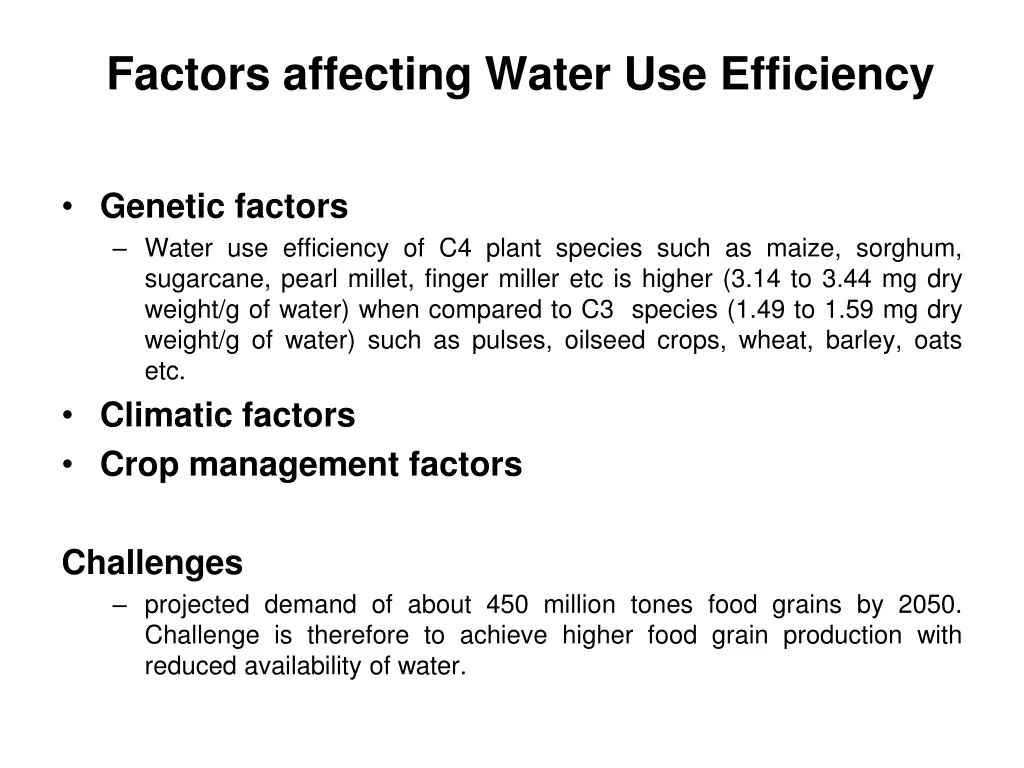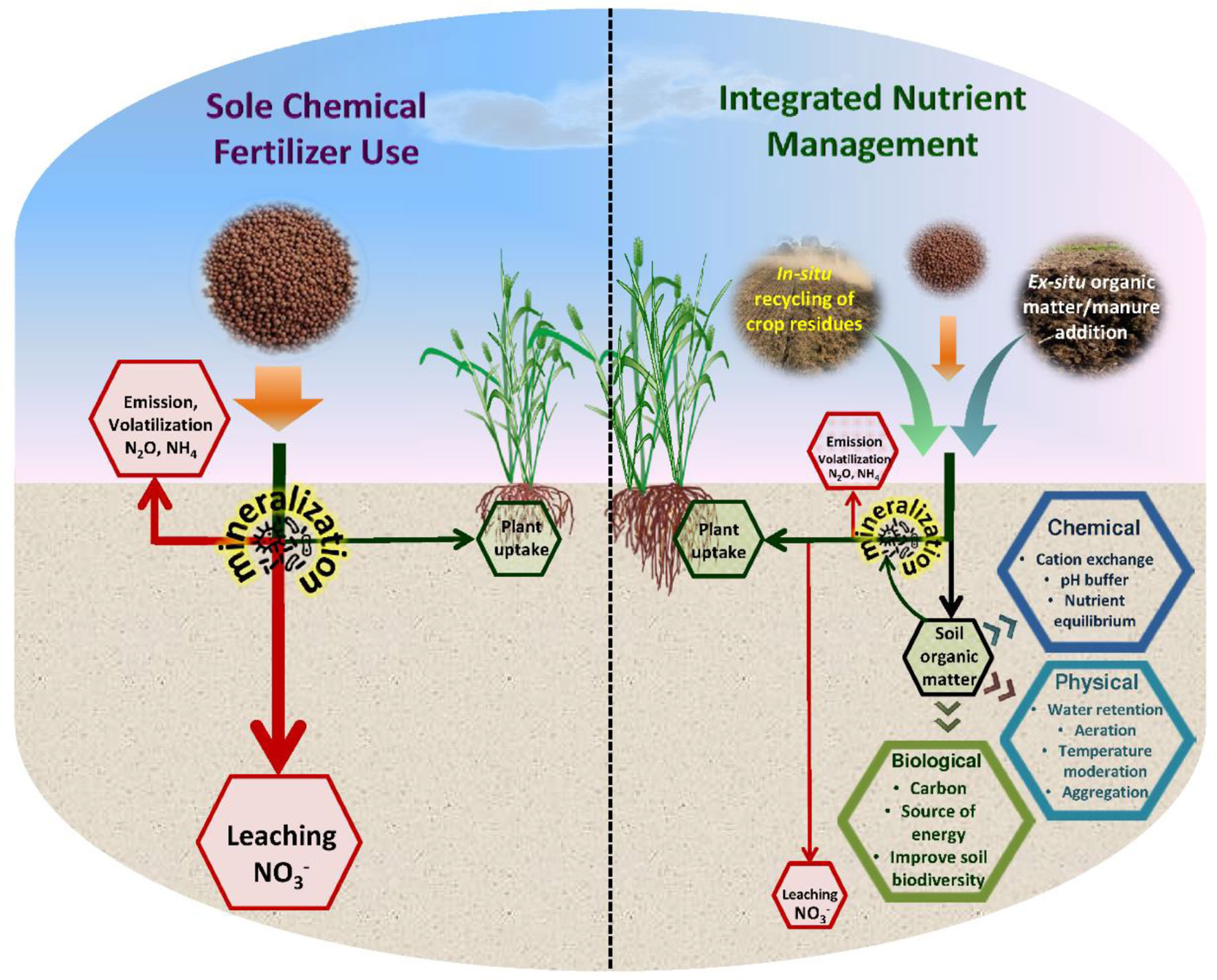
Revolutionizing Agriculture: A Deep Dive into Implementing Smart Fertilizer Delivery Systems
The world is changing, and with it, so is the way we approach food production. We’re facing unprecedented challenges: a growing global population, climate change impacts, and the need to maximize yields while minimizing environmental damage. One of the most promising solutions lies in the realm of precision agriculture, and at its heart is the implementation of smart fertilizer delivery systems. This article delves deep into the intricacies of this technology, exploring its benefits, challenges, and the future it holds for sustainable agriculture.
The Urgent Need for Smart Fertilizer Delivery
Traditional farming methods often involve blanket application of fertilizers, leading to inefficiencies and significant environmental consequences. Over-fertilization can cause nutrient runoff, polluting waterways and harming aquatic ecosystems. It can also lead to soil degradation and reduced long-term productivity. Under-fertilization, on the other hand, can stunt plant growth and reduce crop yields, impacting food security and farmer profitability.
Smart fertilizer delivery systems offer a precise and targeted approach, addressing these issues head-on. By delivering the right amount of fertilizer, at the right time, and in the right place, these systems optimize nutrient use efficiency, reduce environmental impact, and boost crop yields. The urgency for these advancements is undeniable; as we strive for a more sustainable and efficient agricultural future, smart fertilizer delivery stands as a critical component.
What Exactly is Smart Fertilizer Delivery?
At its core, smart fertilizer delivery is the application of technology to optimize the timing, placement, and amount of fertilizer applied to crops. It goes beyond simply spreading fertilizer across a field; it’s a data-driven approach that leverages various technologies to make informed decisions.
Key components typically include:
- Sensors: These can include soil sensors that measure nutrient levels, moisture content, and temperature; weather stations that track rainfall, wind speed, and solar radiation; and crop sensors that monitor plant health and growth.
- Data Analytics: Sophisticated software analyzes data from sensors and other sources to generate insights into crop needs and soil conditions. This analysis helps determine the optimal fertilizer application strategy.
- Variable Rate Application (VRA) Technology: This technology allows farmers to adjust fertilizer application rates across different parts of the field. This can be achieved through GPS-guided sprayers or other application equipment.
- Communication Systems: Wireless networks and other communication systems enable data transfer between sensors, the control system, and the farmer.
- Fertilizer Application Equipment: This can range from specialized sprayers and spreaders to irrigation systems that deliver fertilizer directly to the roots.
The integration of these components allows farmers to make data-driven decisions, ensuring that crops receive the right nutrients precisely when and where they need them.
Benefits of Implementing Smart Fertilizer Delivery
The advantages of adopting smart fertilizer delivery systems are numerous, impacting both the environment and the bottom line for farmers.
Enhanced Crop Yields and Quality
By providing the right nutrients at the right time, smart fertilizer systems promote optimal plant growth and development. This leads to higher yields, improved crop quality, and increased profitability for farmers. Precise nutrient management also reduces the risk of crop stress and disease, further contributing to yield improvements.
Reduced Fertilizer Costs
Smart systems minimize fertilizer waste by applying only the amount needed. This can lead to significant cost savings for farmers, especially with the fluctuating prices of fertilizers. Reduced fertilizer use also translates to a smaller environmental footprint.
Improved Environmental Sustainability
One of the most significant benefits of smart fertilizer delivery is its positive impact on the environment. By reducing fertilizer runoff and leaching, these systems minimize water pollution and protect aquatic ecosystems. They also help to reduce greenhouse gas emissions associated with fertilizer production and application.
Increased Efficiency and Productivity
Smart systems automate many aspects of fertilizer management, freeing up farmers’ time and allowing them to focus on other critical tasks. The data-driven approach also provides valuable insights into crop performance and soil health, enabling farmers to make more informed decisions and improve overall farm management.
Data-Driven Decision Making
Smart fertilizer delivery systems generate a wealth of data that farmers can use to make informed decisions about crop management. This data can be used to optimize fertilizer application, adjust irrigation schedules, and monitor crop health. This data-driven approach allows for continuous improvement and optimization of farm practices.
Challenges in Implementing Smart Fertilizer Delivery
While the benefits of smart fertilizer delivery are clear, there are also challenges that farmers must consider before implementing these systems.
High Initial Investment Costs
The initial investment in sensors, software, and specialized equipment can be substantial. This can be a barrier to entry for smaller farms or those with limited financial resources. However, government subsidies, grants, and financing options are increasingly available to help offset these costs.
Technical Expertise and Training
Smart fertilizer delivery systems require a certain level of technical expertise to operate and maintain. Farmers may need to invest in training or hire consultants to effectively utilize these systems. Understanding data analysis and interpreting sensor readings are also essential skills.
Data Management and Integration
Managing and integrating data from various sources can be complex. Farmers need to ensure that data is accurate, reliable, and compatible with their existing farm management systems. Data security and privacy are also important considerations.
Connectivity and Infrastructure Requirements
Reliable internet connectivity is essential for transmitting data from sensors to the control system. In areas with poor internet access, this can be a significant challenge. Farmers may also need to invest in infrastructure, such as weather stations and soil monitoring equipment.
Compatibility and Standardization
The lack of standardization in the agricultural technology industry can create compatibility issues between different systems and equipment. Farmers need to carefully consider the compatibility of different components before making an investment.
Step-by-Step Guide to Implementing Smart Fertilizer Delivery
Implementing a smart fertilizer delivery system involves several key steps. Here’s a general guide to help farmers get started:
1. Assess Your Needs and Goals
Before making any investments, farmers should carefully assess their needs and goals. What are their specific challenges related to fertilizer management? What are their yield goals? What are their budget constraints? Understanding these factors will help farmers choose the right system and equipment.
2. Conduct a Soil Analysis
A comprehensive soil analysis is essential for understanding nutrient levels and soil conditions. This information will be used to develop a fertilizer application plan. Soil samples should be collected from different parts of the field to account for variations in soil type and nutrient levels.
3. Choose the Right Technology
There are various smart fertilizer delivery systems available, ranging from simple to complex. Farmers should choose a system that meets their specific needs and budget. Consider factors such as the size of the farm, the types of crops grown, and the level of technical expertise available.
4. Install and Calibrate Equipment
Once the system has been chosen, it must be installed and calibrated. This may involve hiring a qualified technician or seeking assistance from the equipment supplier. Proper calibration is essential for ensuring accurate data collection and fertilizer application.
5. Develop a Fertilizer Application Plan
Based on the soil analysis, crop needs, and weather conditions, farmers should develop a detailed fertilizer application plan. This plan should specify the type, amount, and timing of fertilizer applications. It should also include provisions for monitoring crop health and adjusting the plan as needed.
6. Monitor and Evaluate Performance
Regular monitoring of crop health, soil conditions, and fertilizer application data is essential for evaluating the performance of the system. Farmers should track yield improvements, fertilizer cost savings, and any environmental impacts. This information can be used to refine the fertilizer application plan and optimize system performance.
7. Seek Expert Advice and Support
Farmers should seek advice and support from agricultural experts, consultants, and equipment suppliers. These professionals can provide valuable guidance on system selection, implementation, and optimization. They can also help farmers troubleshoot any technical issues and stay up-to-date on the latest advancements in smart fertilizer delivery.
Choosing the Right Smart Fertilizer Delivery System
Selecting the right smart fertilizer delivery system is crucial for maximizing its benefits. Consider these factors:
Farm Size and Crop Type
The size of your farm and the types of crops you grow will influence the type and scale of the system you need. For example, a large-scale corn operation may require a more sophisticated system than a small vegetable farm.
Budget
Smart fertilizer delivery systems range in price. Set a realistic budget and research systems that fit within it. Remember to factor in ongoing costs like maintenance and data analysis subscriptions.
Data Requirements
Determine the level of data collection and analysis you need. Some systems offer basic data, while others provide detailed insights into soil conditions, plant health, and weather patterns. Choose a system that provides the data you need to make informed decisions.
Ease of Use
Consider the system’s user-friendliness. Is the software intuitive and easy to navigate? Does the system provide adequate training and support? Choose a system that you and your team can easily operate and manage.
Integration with Existing Systems
If you already use farm management software or other precision agriculture technologies, choose a system that integrates seamlessly with them. This will streamline data management and improve efficiency.
Support and Maintenance
Ensure the system provider offers reliable technical support and maintenance services. This is crucial for addressing any technical issues and keeping the system running smoothly.
The Future of Smart Fertilizer Delivery
The future of smart fertilizer delivery is bright, with ongoing advancements promising even greater efficiency, sustainability, and profitability for farmers. Key trends include:
Artificial Intelligence (AI) and Machine Learning
AI and machine learning are being used to analyze vast amounts of data and provide more accurate predictions of crop needs and fertilizer requirements. This will enable farmers to make even more precise and data-driven decisions.
Drones and Remote Sensing
Drones equipped with sensors are becoming increasingly popular for monitoring crop health and assessing soil conditions. This technology provides real-time data that can be used to optimize fertilizer application.
Robotics and Automation
Robots are being developed to automate tasks such as fertilizer application and weed control. This will further increase efficiency and reduce labor costs.
Biostimulants and Enhanced Efficiency Fertilizers
Research is focused on developing biostimulants and enhanced efficiency fertilizers that improve nutrient uptake and reduce fertilizer losses. These products will further enhance the effectiveness of smart fertilizer delivery systems.
Integration with Blockchain Technology
Blockchain technology is being explored to track fertilizer usage and ensure transparency in the supply chain. This can help to reduce fraud and improve sustainability.
These advancements promise to revolutionize agriculture, making it more sustainable, efficient, and profitable. As technology continues to evolve, smart fertilizer delivery systems will play an increasingly important role in feeding the growing global population while protecting the environment.
Real-World Examples and Case Studies
To illustrate the practical impact of smart fertilizer delivery, let’s look at some real-world examples:
Case Study 1: Corn Production in Iowa
A large corn farm in Iowa implemented a smart fertilizer delivery system that included soil sensors, GPS-guided sprayers, and data analytics software. The system allowed the farmer to adjust fertilizer application rates based on soil nutrient levels and crop needs. As a result, the farmer reduced fertilizer use by 20%, increased corn yields by 15%, and significantly reduced fertilizer runoff into local waterways.
Case Study 2: Vegetable Farming in California
A vegetable farm in California adopted a smart irrigation system that delivered fertilizer directly to the roots of the plants. This system, combined with soil moisture sensors and weather data, allowed the farmer to optimize water and fertilizer use. The farm experienced a 30% reduction in water consumption, a 25% reduction in fertilizer costs, and a 10% increase in vegetable yields.
Case Study 3: Wheat Farming in Australia
A wheat farmer in Australia used drones to monitor crop health and identify areas with nutrient deficiencies. Based on the drone data, the farmer applied variable rate fertilizer, targeting specific areas of the field. This approach resulted in a 10% increase in wheat yields and improved grain quality.
These case studies demonstrate the significant benefits of smart fertilizer delivery systems across various crops and farming environments. They highlight the potential for increased profitability, improved environmental sustainability, and enhanced farm management.
Overcoming Obstacles and Embracing the Future
While the benefits of smart fertilizer delivery are compelling, successful implementation requires careful planning and execution. Farmers face several potential hurdles, but these can be overcome with the right approach:
Addressing the Cost Factor
The initial investment in smart fertilizer delivery systems can be a significant barrier. However, farmers can mitigate this cost through several strategies:
- Seeking Government Subsidies and Grants: Many governments offer financial assistance to farmers adopting precision agriculture technologies.
- Exploring Financing Options: Banks and other financial institutions may offer loans or leasing options for agricultural equipment.
- Phased Implementation: Start with a smaller-scale implementation and gradually expand the system as you gain experience and see results.
Bridging the Knowledge Gap
The technical expertise required for smart fertilizer delivery can be a challenge for some farmers. To address this:
- Investing in Training: Attend workshops, online courses, and other training programs to learn about the technology and its applications.
- Hiring Consultants: Work with agricultural consultants who specialize in precision agriculture to get expert guidance and support.
- Networking with Other Farmers: Connect with other farmers who have experience with smart fertilizer delivery systems to share knowledge and learn from their experiences.
Managing Data Effectively
Data management can be complex, but it’s essential for making informed decisions. To streamline data management:
- Choosing User-Friendly Software: Select software that is easy to use and integrates well with your existing farm management systems.
- Establishing Data Storage and Backup Procedures: Implement a robust system for storing and backing up your data to ensure its security and accessibility.
- Analyzing Data Regularly: Dedicate time to regularly analyze your data to identify trends, patterns, and areas for improvement.
By proactively addressing these potential obstacles, farmers can successfully implement smart fertilizer delivery systems and reap the rewards of increased efficiency, sustainability, and profitability. The future of agriculture is undeniably linked to the adoption of these innovative technologies, and those who embrace them will be best positioned to thrive in the years to come.
Conclusion: The Transformative Power of Smart Fertilizer Delivery
Smart fertilizer delivery is more than just a technological advancement; it’s a paradigm shift in how we approach agriculture. It represents a move towards precision, sustainability, and efficiency, addressing the critical challenges facing modern farming. By optimizing nutrient use, reducing environmental impact, and boosting crop yields, these systems are paving the way for a more resilient and productive agricultural sector.
The journey towards implementing smart fertilizer delivery may present challenges, but the potential rewards are immense. Farmers who embrace this technology are not just investing in their farms; they are investing in a sustainable future for agriculture. As technology continues to evolve, smart fertilizer delivery systems will play an increasingly vital role in feeding the world, protecting our planet, and ensuring the long-term viability of farming.
The time to act is now. By taking the initiative to learn, adapt, and implement smart fertilizer delivery systems, farmers can position themselves at the forefront of the agricultural revolution, contributing to a more food-secure and environmentally responsible world.


